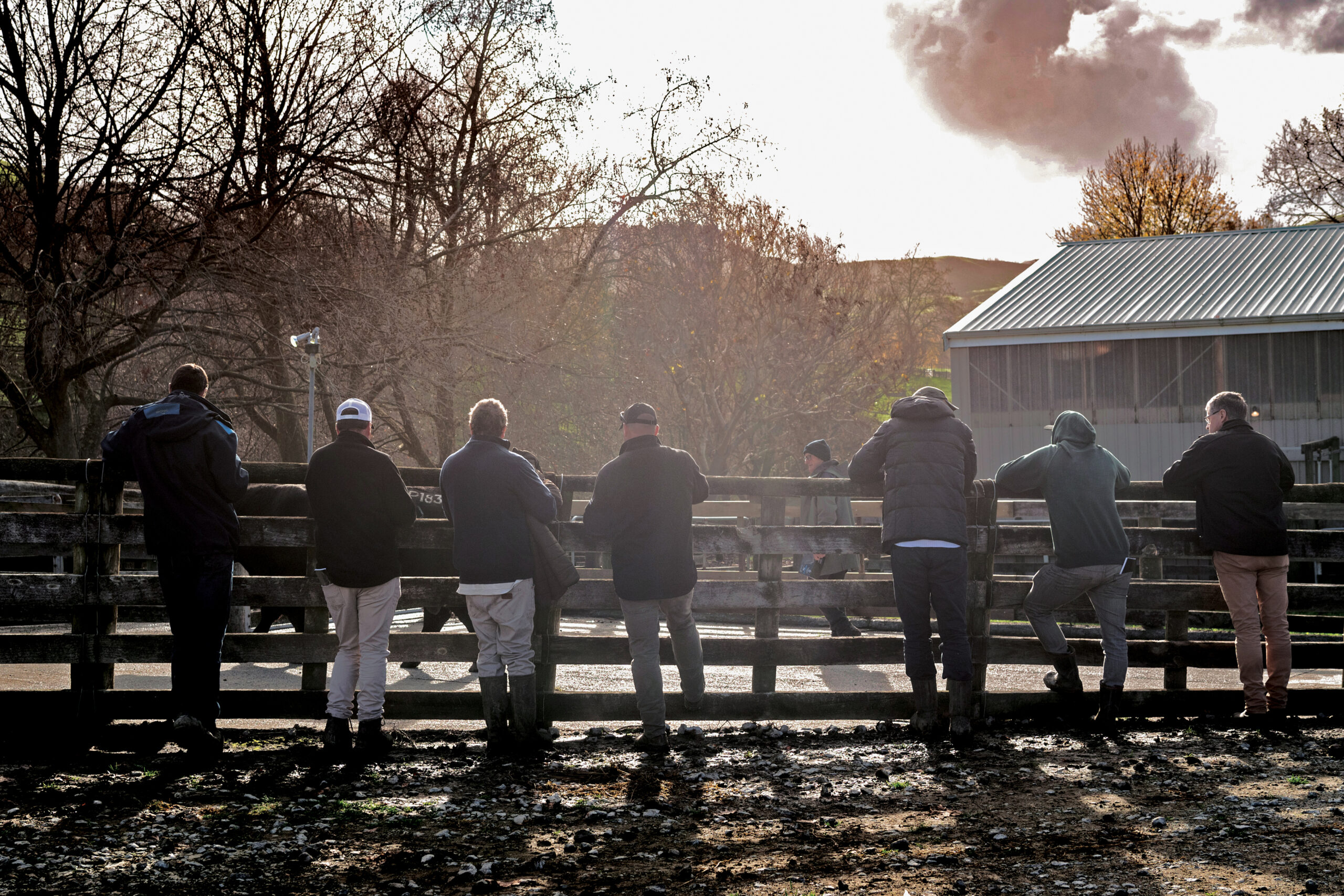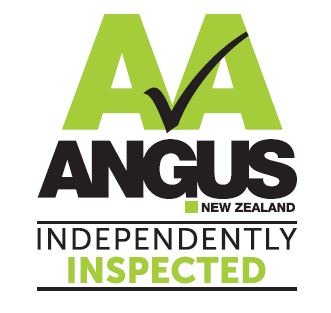
SELLING
FOR BETTER BALANCED BEEF
The aim of this manual is to produce a reference point leading to the better understanding of the New Zealand Angus Association Inspection system as it operates since the change on 1st April 2002.
Inspections for Sales of Cattle
Foreword
On 1st April 2002 the New Zealand Angus Inspection System was altered to become a voluntary system of quality assurance. This current “Inspection Manual” outlines the criteria for inspection, as it will be applied in the field.
The New Zealand Angus Association is divided into 10 wards, each ward electing a councillor who together form the New Zealand Angus Council. Each ward has within its boundaries resident inspectors appointed by the ward and verified by Council for the purpose of inspecting cattle. These inspectors must be active breeders at the time of their appointment. They will apply the inspection process as laid down in this manual.
Introduction
The aim of this manual is to produce a reference point leading to the better understanding of the New Zealand Angus Association Inspection system as it operates since the change on 1st April 2002.
The New Zealand Angus Council determined that it did not want to do away with the inspection system as such, but to enhance it and use it to improve the quality of Angus cattle in New Zealand.
The new system, if applied correctly by the inspectors, gives the breed more opportunity to correct specific faults creeping into the Angus breed. Although all cattle, if registered, can now be transferred, if a buyer so desires, the breed will not promote or endorse the sale of cattle that do not meet the required standard as set down in this manual. The breed will promote those cattle which receive “Approved Status”.
Some of the areas and faults which Council wants to highlight are:
- Bad feet
- Temperament
- Sheaths
- Lack of constitution
- Excessive white patches
- Bad leg and shoulder structure
- Short or weak underjaws and other areas of tail and rump setting, overall balance of structure etc.
The new system places far less pressure on inspectors, as those cattle that fail inspection will be either:
- Withdrawn from sale by the vendor
- Worth far less financially
“The inspection system must never interfere with breeders rights to use various types of cattle in their quest for further improvement. Had the New Zealand Angus Association tried to fix the type so much in evidence 50 years ago the Angus breed would now be history”. A quote from a great Angus man, Fred Saunders as true today as it was when it was made.
Inspection
Defined as:
A service offered by the New Zealand Angus Association to breeding members as a form of quality assurance.
Animals of a minimum age which pass inspection may assume an “Approved Status” and may be promoted under the associated New Zealand Angus Association’s “Approved Status” logo, which are as follows:

The Inspection system is a voluntary system applied for by the owner of the cattle.
It is only compulsory in the event:
> By resolution of council, eg. The National Beef Expo.
Inspection Process
- All inspections, except for dispersal and reduction sales, must be applied for through the ward councillor.
- Inspection can be made up to three months prior to the sale.
- The cost of inspection is to be borne by the vendor.
- There are three categories of inspection under the new system:
- Non transferable
- Approved
- Non Approved
- All inspection reports must be signed by the owner, or his agent in the presence of the Inspector(s) prior to the Inspector(s) leaving the property.
Inspection System
- Inspection for “Approval” can only take place if the animal is 18 months of age or older.
- Any animal which has been given “Approved” status will retain this status until:
- Re-inspection takes place Ð this will take priority over the previous inspection OR
- The “Approved” status for that animal is rescinded by Council.
- Animals that are declined “Approved” status are still available for transfer, with the reason why “Approval” has been declined prominently displayed or stated.
- The owner of any animal, which is declined “Approval” status, may request re-inspection.
- Because inspection is NOT required for a transfer to take place, it places greater emphasis on the vendor to enact the transfer.
Dispersal and Reduction Sales
Inspection that is requested by the vendor for these sales requires two (2) Inspectors and must be arranged through the Angus Breed Manager.
AB Classification
AB Classification does not require inspection for “Approval” to take place. This is a description of the animal to be filled out on an AB Classification form. Two (2) inspectors are required here, both to be present.
Export
All export certification must be administered through the Angus New Zealand office and inspections arranged by Angus New Zealand.
